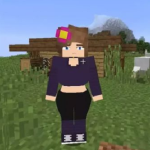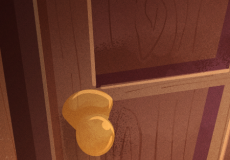

Kamila
Advertisement
Kamila is a narrative-driven game that follows a young woman navigating a strange and surreal environment after waking up with no memory of how she arrived. Players guide Kamila through a shifting world filled with symbolic landscapes, fragmented dialogue, and mysterious objects. The game blends light puzzle-solving with interactive storytelling, asking players to piece together Kamila’s identity and the purpose behind the dreamlike place she explores. Progress comes through exploration and decision-making, with each choice revealing new parts of the story.
Advertisement
Similiar games
Kamila is a narrative-driven game that follows a young woman navigating a strange and surreal environment after waking up with no memory of how she arrived. Players guide Kamila through a shifting world filled with symbolic landscapes, fragmented dialogue, and mysterious objects. The game blends light puzzle-solving with interactive storytelling, asking players to piece together Kamila’s identity and the purpose behind the dreamlike place she explores. Progress comes through exploration and decision-making, with each choice revealing new parts of the story.
Exploring the Unknown
The game does not follow a linear path. Instead, Kamila must choose which directions to follow in a fragmented world that changes depending on previous actions. Certain paths unlock memories or clues about her past, while others introduce strange characters who offer cryptic guidance or questions. The atmosphere remains quiet and reflective, encouraging players to focus on observation and interpretation rather than action or fast movement. Hidden elements and visual details often hint at themes that are never directly stated.
Interactive Elements and Progression
Kamila includes a variety of mechanics that support its exploration and storytelling structure. These include:
· Item collection and combination to solve symbolic puzzles
· Environmental changes triggered by specific interactions
· Dialogue choices that affect later scenes
· Non-verbal storytelling through visual cues and sound
· A journal system that logs key memories and clues
These elements combine to create a reflective experience where progress depends on attention to detail and emotional insight.
Art Style and Sound Design
The visual design of Kamila relies on abstract shapes, soft color transitions, and minimal text. Each area feels different, from dim forests to floating hallways or endless staircases. Characters and objects often appear in distorted forms that reflect Kamila’s emotional state or memories. The soundtrack uses ambient layers and simple melodies to add atmosphere without dominating the scene. These choices support the narrative by reinforcing the feeling of a fragmented personal journey.
Emotional Focus and Player Experience
Rather than giving players goals tied to points or enemies, Kamila asks them to uncover meaning through interaction and thought. The story deals with memory, identity, and loss, but leaves interpretation open. Some players may complete the game without a clear answer, while others will connect the pieces into a larger message. This flexible structure allows each playthrough to feel personal. Kamila offers an experience where the story unfolds as much in the player’s mind as on the screen.
Discuss Kamila



















